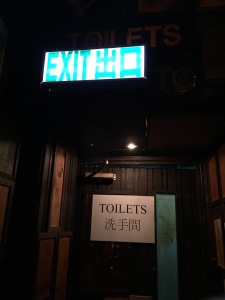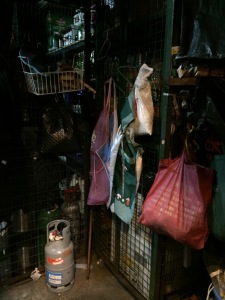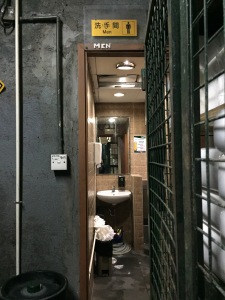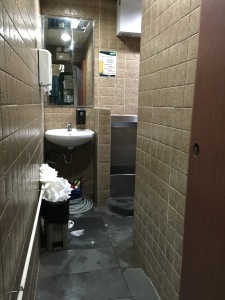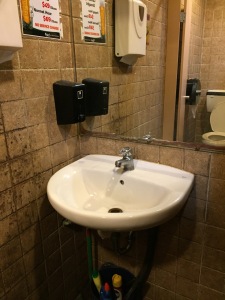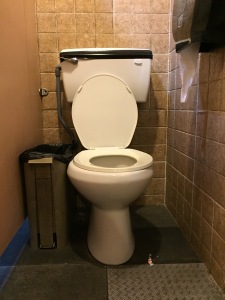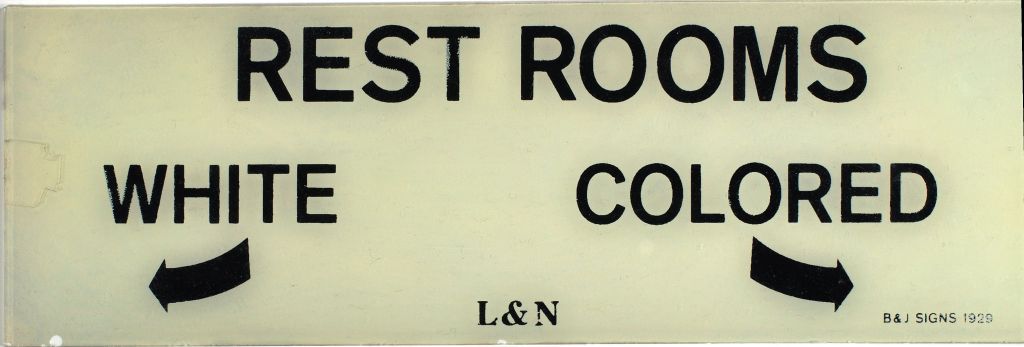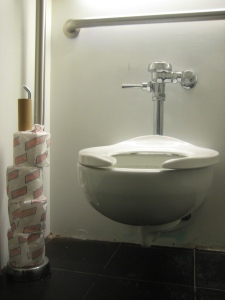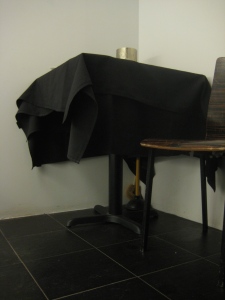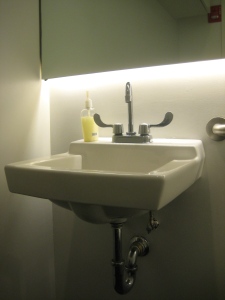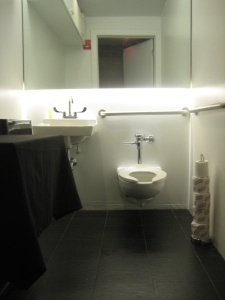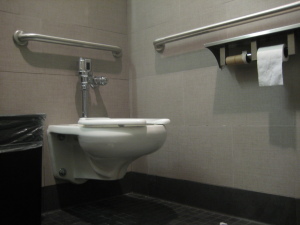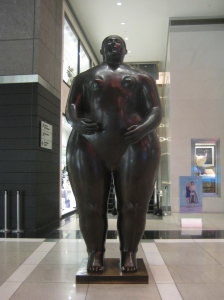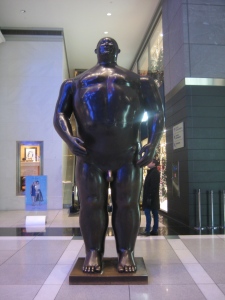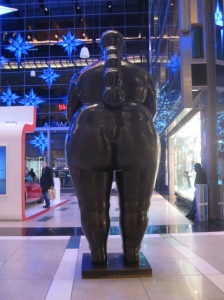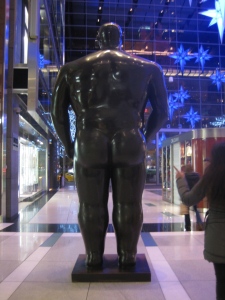Ned Kelly’s Last Stand
Posted: February 23, 2016 Filed under: JAZZ TOILET INTERNATIONAL | Tags: TUESDAY TOILET TALK Comments Off on Ned Kelly’s Last StandThis Sunday was the four-year mark of the launch of JAZZ TOILET so I thought I’d write a TUESDAY TOILET TALK for old times’ sake. I’m currently living in Seoul to study the Korean traditional 12-string gayageum. Since it’s relatively close by, I hopped over to Hong Kong on Wednesday to meet up with my friends Molly and Jerry and we checked out Ned Kelly’s Last Stand, an Australian-themed pub known for their nightly live jazz.
The restrooms are located in the back of the venue, past the stage and through the door marked TOILETS in English and Cantonese. The women’s room has two stalls and one sink. As for the men’s room, Jerry told me there’s a trough-like urinal and probably a toilet though he wasn’t sure. The back area with the restrooms had miscellaneous items including aprons and gas tanks.
I kept forgetting what city I was in during my brief stay in Hong Kong. It felt like I was in a generic metropolitan city walking among towers and high-rise buildings, save for the bamboo scaffolding. We shopped at Muji and Uniqlo, had tea at Mandarin Oriental and stayed at the Sheraton—this could have been our itinerary in a number of other cities on earth. Of course, we went to local shops too but sometimes I felt as though I was just in Chinatown.
The way up to Victoria Peak was distinct with bits of tropical-looking foliage juxtaposed against urban concrete and steel. I had been reading about the recent night market protest and the missing booksellers but that part was invisible to me as an American tourist.
In the same way I’m given chopsticks to have salmon salad in Seoul, I’m sure there were local subtleties affecting even the most Western of things, but I was too preoccupied to notice. After milk tea and Ned Kelly’s Last Stand I spent the night in the bathroom with abdominal bloating like I’d never seen before until flatulence and diarrhea relieved me of my fear that I would explode. Molly tried to assure me that people don’t spontaneously explode but my mind started running through the lyrics of a song I learned in high school vocal jazz ensemble titled Spontaneous Human Combustion describing instances of people doing just that.
Hong Kong is truly a global city. After I ran out of barf bags, my Korean expat vomit went into a chocolate boutique bag from Bangkok provided by the hostess at a Japanese tapas place. Also, I heard jazz in many places, not just Starbucks; jazz music seems to be the auditory signal that a place is deliberately sophisticated and international.
The live jazz at Ned Kelly’s Last Stand was nice, a throwback to the music of Louis Armstrong and his Hot Five. Guitarist Aki who doubled on piano and banjo told me he has been in the Ned Kelly’s band for 18 years since coming to Hong Kong from the Philippines and others have been there longer, like 30 years. That is a long time. He tells us how to say “Where’s the restroom here?” in Tagalog —
Three-Year Mark
Posted: February 21, 2015 Filed under: Ken® | Tags: voicekwon Comments Off on Three-Year MarkI’m not sure how this happened but I have now been blogging about toilets in jazz clubs for three years. Those years have flown by and I’ve grown much; you may have witnessed a piece of this growth if you have been following this site closely. I started allotting just one space after the period and my views on clear and economical comma usage are continuing to evolve. I have yet to feel like I can use the adjective “killing” in an authentic way and not feel like I’m using it as a parody of the jazz musician—I think I’ve accepted that day may never come.
I checked out many venues and musicians I wouldn’t have seen if it weren’t for the need to review a new space. I met lots of people to ask for translations of “Where’s the restroom?” in their native as well as adopted tongues and am currently tweeting one a day for this month with #JT3yr to commemorate the third year. I also got to work with a great team of friends. Before Ken® was let go, he appeared in each post; you can play “Where’s Waldo?” on this site and look for him in photos up to Thanksgiving 2013.
Thanks in part to this blog, I’ve learned to harness the power of processing and uncovering ideas through the act of writing and have even been given a job as a writer/editor. On a somewhat related note, I once was attempting to type on my French friend’s laptop when I noticed that it was very difficult for me to do so because it was a different keyboard from that I was accustomed to typing English, Korean and Portuguese. I asked him why the French bother to have a different layout instead of just sticking to the QWERTY one. He replied by saying that it is a means of having power because control over language equals power. Doesn’t that make perfect sense?
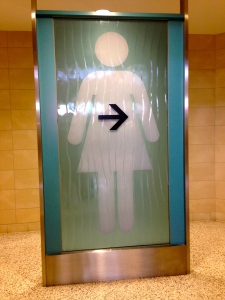 In many ways, this has been a documentation of my life in New York City. I feel that I really live here now having gone through the all-too-common “That’s it! I’m moving back to LA” phase and having stayed, yet feeling no strong pull to stay despite my close friends and communities here.
In many ways, this has been a documentation of my life in New York City. I feel that I really live here now having gone through the all-too-common “That’s it! I’m moving back to LA” phase and having stayed, yet feeling no strong pull to stay despite my close friends and communities here.
This third year marks the end of regular reviews and I don’t know if and when I will blog on here again. If you think you might miss my voice, don’t worry—you’ll be able to hear it through many other outlets.
It’s time for me to go and focus on other creative endeavors, among them making plus size fairy art and singing/composing for my new indie electronic band.
Thank you for reading, thank you for your encouragements, thank you for the curiosity. I hear the Village Vanguard has renovated their restrooms since the first review in 2012. Maybe I’ll see you there. Feel free to tweet or email me anytime. Take care and please remember to flush!
Black American Music
Posted: February 6, 2015 Filed under: Ken® | Tags: voicekwon 2 Comments »“It’s like a white person playing kayagŭm.”
Driving back from a show at a LA jazz club where the musician took care to identify as a Black American Music (BAM) artist, my sister and I were conversing about the performance when she drew a parallel between a white person playing jazz and a white person playing kayagŭm, a 12-string Korean traditional instrument.
Flabbergasted and absolutely incredulous, I yelled back that it’s not the same thing; white people can’t play Korean music without internalizing the essence of the music stemming from the lived history and sense of Han that Koreans collectively harbor from hundreds and hundreds of years of oppression under invasions from neighboring superpowers and colonialism. But it’s different with jazz!
“How is it different?” she asked.
…
I tried to formulate my defense but began to realize that there wasn’t much to say. There was a time when jazz too was folk music, music rooted in a history and struggle, music that belonged to Black Americans. The difference is that Korean traditional music still very much belongs to Koreans whereas jazz has been appropriated to the point where I can forget about its origins if I’m not relentless about reminding myself. It’s pretty scary that I’ve been schooled in jazz for over a decade from my beginning at an arts high school to graduate school in a prestigious jazz program and had trouble seeing past a shallow revisionist account of jazz history.
Sure, we laughed in jazz history class about Paul Whiteman, the white man who was hailed as the “King of Jazz” back in the 20’s, but there was no real discussion on the politics of race and power and its influence on the music. Even when trumpeter Nicholas Payton started writing about and coined the term Black American Music on his blog, I understood his points on an intellectual level but didn’t care enough to thoroughly re-examine my paradigm.
I see now that this is not about jazz vs. BAM but about something that needs to be in the greater public discourse and has been with the much-publicized feud between Azealia Banks and Iggy Azalea. When my sister and I got home from the show, we grabbed In-N-Out and stayed up watching the interview below in which Azealia Banks articulates why she has a problem with Iggy Azalea, the self-described “runaway slave master,” becoming the face of rap/hip-hop. The segment on “cultural smudging” starting at 8:35 might be the best jazz history lesson I never received.
In Azealia Banks’ own words:
“Just in this country, whenever it comes to our things–like black issues, or black politics, or black music or whatever–there’s always this like undercurrent of kind like a f–k you, there’s always like a f–k you all ni–as, like you all don’t really own sh-t, like you all don’t have sh-t, you get what I’m saying?”
“So this little thing called hip-hop that I’ve created for myself that I’m holding onto with my dear f—ing life, it’s like, you know, it just feels like it’s being like, like snatched away from me or something.”
On the history of slavery and the lack of reparations:
“At the very f—ing least you owe me the right to my f—ing identity and to not exploit that sh-t, you get what I’m saying? Like, that’s all that we’re like holding onto, like hip-hop and rap.”
I think Azealia Banks must be one of the sharpest minds in popular culture. Fully aware of the long history of white people’s appropriation of black people’s creations and accomplishments as their own, she is vigilant about making sure that her genre doesn’t suffer a fate similar to jazz. I see now why Nicholas Payton wants to distance himself from jazz and be associated with Black American Music, a name that makes its origin clear.
@JAZZTOILET @AZEALIABANKS 🙂 Ha. Now you get it… Shout out to Azealia for speaking to White appropriation of Black culture. #BAM
— Nicholas Payton (@paynic) February 10, 2015
I can already hear some responding by saying “hey, it’s all about the music”—it must be nice to have that kind of privilege, to not have to acknowledge the issues. I’m willing to guess based on past experience that some of those same people would jump on the chance to profit from the injustice suffered by the communities of color under the guise of bringing the matter to attention or something like that. Here’s a good rule of thumb: it’s not okay to appropriate someone else’s suffering for your profit.
I’d like to point out one more thing that you may or may not have noticed. I’ve gone to over fifty jazz-presenting venues in New York City in my three years of reviewing bathrooms for this blog. Guess how many of them were owned by black people?
Zero.
Here’s one more quote from Azealia Banks on the upcoming awards that are supposed to represent artistic excellence in hip-hop, among other categories:
“When they give these Grammys out, all it says to white kids is–oh yeah you’re great, you’re amazing, you can do whatever you put your mind to. And it says to black kids–you don’t have sh-t, you don’t own sh-t, not even the sh-t you created for yourself. And it makes me upset.”
It makes me upset too.
Subrosa
Posted: January 27, 2015 Filed under: Meatpacking | Tags: TUESDAY TOILET TALK Comments Off on SubrosaA couple Thursdays ago I checked out the new Latin and World Music venue in the Meatpacking District with my sister who was visiting. Walking on the cobblestone streets to Subrosa I felt like we were in a different city altogether. The venue itself was also different from what I might have expected based on the three other Blue Note Entertainment Group venues in New York; it was spacious and trendy with small round tables that had black mirror surfaces. My favorite part of the place was the set of huge steps that descended gradually from the entrance. It’s rare to see that kind of indulgent architecture in Manhattan where price per square foot can be excessive.
I noticed that there was an elevator in the back and grab bars in the two unisex restrooms that would meet accessibility guidelines. The stark restrooms did not match the decor of the rest of the venue but my eyes found relief in the bright light and white walls of the loo after being in the dim venue emitting red light. Also, the restrooms are perfect for taking some quiet time for yourself if you start feeling overwhelmed by the energetic and loud music from the stage.
Cuban singer José “Pepito” Gómez and his sextet performed their tribute to the Buena Vista Social Club that night. He spoke mostly in Spanish so I’m not sure what he said but I was rather impressed with his stamina in belting out the songs. I think I would start feeling tired if I tried to sing like that for a whole night.
We arrived hungry for the first set and learned that there was no food offered. There was a twenty-dollar minimum per person which we found difficult to fulfill with just liquids, considering that I don’t care for alcohol. The bartender had trouble pronouncing the list of available Scotch but my sister was able to settle on one and got me a virgin cocktail, my second ever. There was no menu so we had no idea if we were meeting the drink minimum — my sister just ordered another drink once she noticed that they did have wine after all, seeing a glass at another’s table.
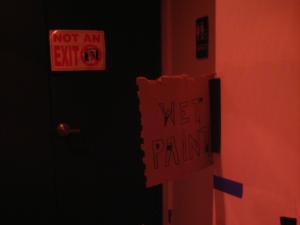 It’s still a new venue so I’m sure they are working out the kinks like the wet paint between the restroom doors. With their nice wait staff and fashionable furnishing, Subrosa seems like an ideal spot for yuppies to grab drinks and listen and maybe even dance to live music. I’ll add that it definitely felt more like a date spot though.
It’s still a new venue so I’m sure they are working out the kinks like the wet paint between the restroom doors. With their nice wait staff and fashionable furnishing, Subrosa seems like an ideal spot for yuppies to grab drinks and listen and maybe even dance to live music. I’ll add that it definitely felt more like a date spot though.
For this issue, second-generation Taiwanese-American Jonathan, whose family goes back four to five hundred years in Taiwan, tells us how to say “Where’s the restroom?” in Taiwanese (not to be confused with Taiwanese-accented Mandarin) —
Dizzy’s Club Coca-Cola
Posted: December 23, 2014 Filed under: Midtown | Tags: TUESDAY TOILET TALK Comments Off on Dizzy’s Club Coca-Cola“You better watch out, you better not cry. You better not pout, I’m telling you why. Coca-Cola’s coming to town.“
It took a moment to catch the error as participants sang at the annual holiday sing-along I was leading. After clearing up the confusion, we started the song again only to have my friend from South Africa make the same mistake. I understood why he conflated the two considering the great and global extent to which the contemporary Santa Claus has become synonymous with Coca-Cola and the beverage company’s history in appropriating and streamlining Santa’s look.
So then what are the implications for a jazz club that was funded by Coca-Cola and bears its name alongside the trumpeter’s? Much like the soft drink, I know what to expect from Dizzy’s each time. It’s a good place to suggest to friends who want to check out a jazz club without risk of finding the music or the restroom offensive. The two unisex restrooms at Dizzy’s can be found by walking along the left wall of the club. Pictured below is the bathroom on the right side.
Accompanied by Dion Kerr on bass and Kyle Poole on drums, pianist Emmet Cohen led his trio with an unusually delicate touch on the keys, reminiscent of Bill Evans. I noted again on the Black Friday show as I did the first time I heard Emmet play that he doesn’t fall into the usual jazz piano camps. Not only does he sound different, he also has an odd manner of wearing Ray-Bans indoors, which I’ve noticed when I’ve run into him in our school elevators.
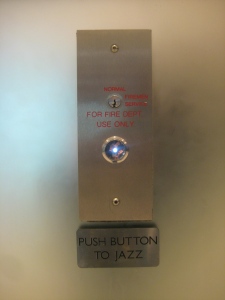 Speaking of which, you’ll take an elevator up to the club by pressing a button that says “PUSH BUTTON TO JAZZ” from the far right wing of the first floor. From there you can go to any of the venues that Jazz at Lincoln Center operates. If you are taking the train, keep in mind that Jazz at Lincoln Center is not at 66th Street – Lincoln Center but at Columbus Circle – 59th Street instead.
Speaking of which, you’ll take an elevator up to the club by pressing a button that says “PUSH BUTTON TO JAZZ” from the far right wing of the first floor. From there you can go to any of the venues that Jazz at Lincoln Center operates. If you are taking the train, keep in mind that Jazz at Lincoln Center is not at 66th Street – Lincoln Center but at Columbus Circle – 59th Street instead.
Aside from the the jazz venues and the many shops, two of the most popular attractions at Time Warner Center are the bigger-than-life statues of a naked man and a woman. Standing tall in front of each set of escalators in the middle of the plaza, they seem to attract many passersby who want to stop to pose for photos. And during the holiday season, glowing spiky stars hang above and all around them to create a festive mood. There is a lot to see in New York City during this season but I’m really glad to be home for Christmas this year.
I’ll be going to the block party at my neighbor’s house tonight to make amends for last year when my dad took a large bath towel for the ornament gift exchange. My mom has also been feeling bad that we’ve put up no decorations when our Buddhist neighbors have strung lights so I figure the least I could do is show up to their party with a gingerbread man ornament.
I was able to catch Rasmus, a journalist from Denmark who was in Egypt for the past year, on holiday in New York City. He gives us this issue’s translation of “Where’s the restroom?” in Danish —

